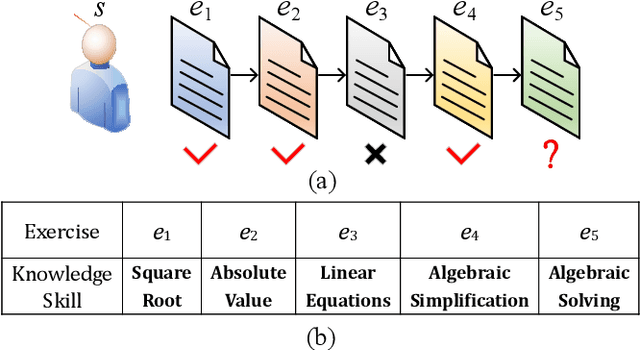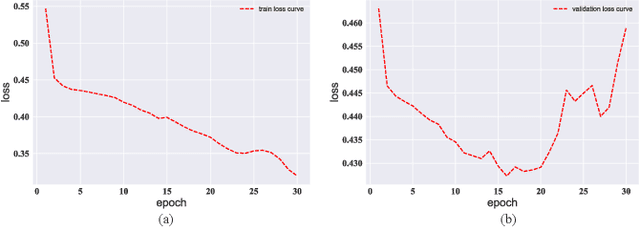Maojing Shu
Enhancing Knowledge Tracing via Adversarial Training
Aug 10, 2021



Abstract:We study the problem of knowledge tracing (KT) where the goal is to trace the students' knowledge mastery over time so as to make predictions on their future performance. Owing to the good representation capacity of deep neural networks (DNNs), recent advances on KT have increasingly concentrated on exploring DNNs to improve the performance of KT. However, we empirically reveal that the DNNs based KT models may run the risk of overfitting, especially on small datasets, leading to limited generalization. In this paper, by leveraging the current advances in adversarial training (AT), we propose an efficient AT based KT method (ATKT) to enhance KT model's generalization and thus push the limit of KT. Specifically, we first construct adversarial perturbations and add them on the original interaction embeddings as adversarial examples. The original and adversarial examples are further used to jointly train the KT model, forcing it is not only to be robust to the adversarial examples, but also to enhance the generalization over the original ones. To better implement AT, we then present an efficient attentive-LSTM model as KT backbone, where the key is a proposed knowledge hidden state attention module that adaptively aggregates information from previous knowledge hidden states while simultaneously highlighting the importance of current knowledge hidden state to make a more accurate prediction. Extensive experiments on four public benchmark datasets demonstrate that our ATKT achieves new state-of-the-art performance. Code is available at: \color{blue} {\url{https://github.com/xiaopengguo/ATKT}}.
Visual Perception Model for Rapid and Adaptive Low-light Image Enhancement
May 15, 2020



Abstract:Low-light image enhancement is a promising solution to tackle the problem of insufficient sensitivity of human vision system (HVS) to perceive information in low light environments. Previous Retinex-based works always accomplish enhancement task by estimating light intensity. Unfortunately, single light intensity modelling is hard to accurately simulate visual perception information, leading to the problems of imbalanced visual photosensitivity and weak adaptivity. To solve these problems, we explore the precise relationship between light source and visual perception and then propose the visual perception (VP) model to acquire a precise mathematical description of visual perception. The core of VP model is to decompose the light source into light intensity and light spatial distribution to describe the perception process of HVS, offering refinement estimation of illumination and reflectance. To reduce complexity of the estimation process, we introduce the rapid and adaptive $\mathbf{\beta}$ and $\mathbf{\gamma}$ functions to build an illumination and reflectance estimation scheme. Finally, we present a optimal determination strategy, consisting of a \emph{cycle operation} and a \emph{comparator}. Specifically, the \emph{comparator} is responsible for determining the optimal enhancement results from multiple enhanced results through implementing the \emph{cycle operation}. By coordinating the proposed VP model, illumination and reflectance estimation scheme, and the optimal determination strategy, we propose a rapid and adaptive framework for low-light image enhancement. Extensive experiment results demenstrate that the proposed method achieves better performance in terms of visual comparison, quantitative assessment, and computational efficiency, compared with the currently state-of-the-arts.
 Add to Chrome
Add to Chrome Add to Firefox
Add to Firefox Add to Edge
Add to Edge